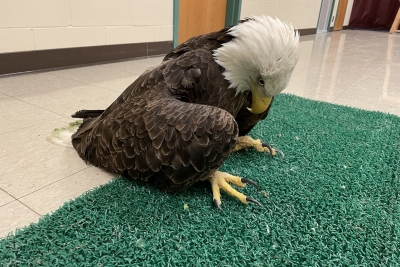
The bald eagle is the national symbol of the United States. But in the 1960s it had almost been wiped out there due to hunting. Pesticide DDT also wreaked havoc on the species. The chemicals collected in fish, which make up most of the eagle’s diet. They weakened the bird’s eggshells and severely limited their ability to reproduce. After the pesticide ban in 1972 and conservation efforts, the bird made a comeback and it was removed from the Endangered Species Act protection in 2007.
But the bald eagles are facing a new threat now – lead poisoning. A study of hundreds of bald eagles and golden eagles showed that nearly half of them had chronic lead poisoning.
The study, which was published in the journal Science, evaluated eagles in 38 states, testing their bones, feathers, livers and blood for lead. Researchers found that 46% of bald eagles and 47% of golden eagles had chronic lead poisoning.
Scientists believe that the primary source of the lead is spent ammunition from hunters who shoot animals that the eagles subsequently scavenge on. The lead concentrations spiked in the winter, when birds were less likely to find prey and more likely to be scavenging for a meal.
Why is this a problem?
Lead poisoning can prevent every system of an eagle’s body – respiratory, digestive and reproductive – from functioning properly. Over time, ingested lead becomes stored in bones and this can cause severe loss of locomotion making an eagle lose its ability to fly and move.
Scientists have called for a ban on the use of lead ammunition in all the States of America.
Picture Credit : Google




